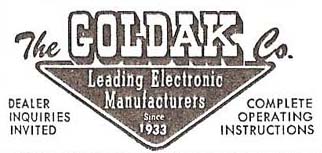
Goldak Company
The Goldak Company of 1547 W. Glenoaks Blvd., Glendale, California began to make Geiger counters as early as 1950 and advertised as a Leading Electronic Manufacturer since 1933 and the World's Finest Detection Equipment Manufacturer.

Glodak Logo 1955
The Prospectometer Model GC-235 was offered in 1955 for $149.50. It was designed for beta-gamma measurements for prospecting. It had three indicators count rate meter, earphones and neon flashing light. It had a scale of 0.2, 2 and 20 mR/h. It used two 1.5, two 45 and one 22.5 volt batteries. It measured 3.75 x 7-7/8 x 4.75 and weighed 5.5 lbs. It came in a gray hammertone, baked enamel finish.
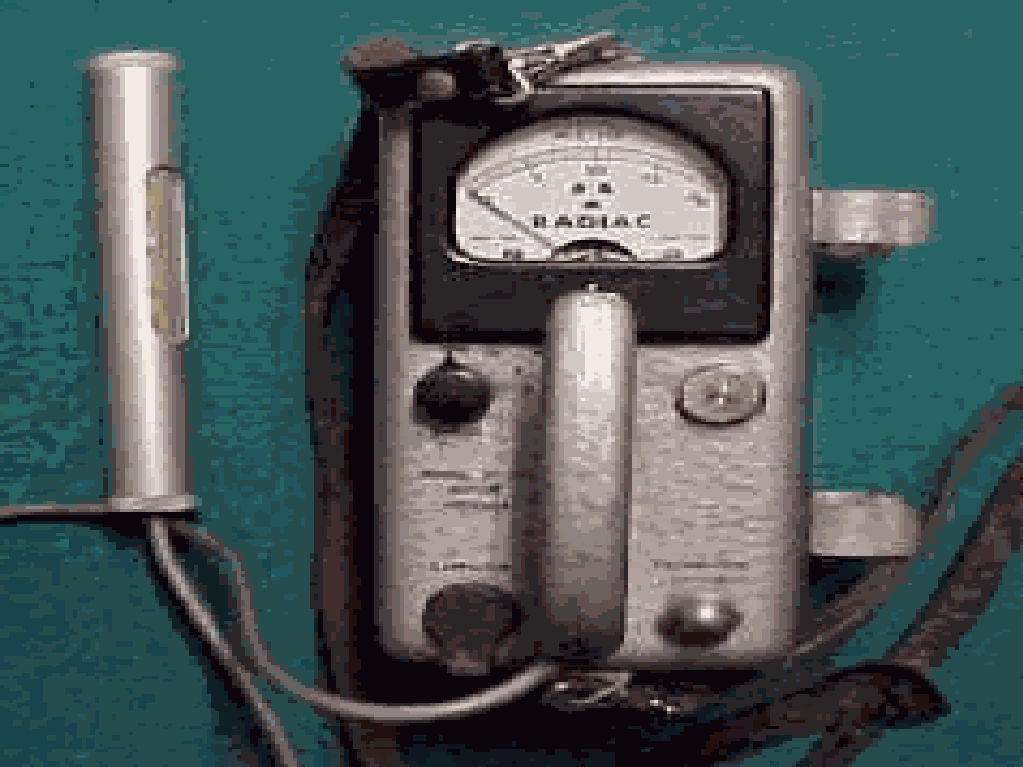
Goldak Model GC-235 Prospectometer 1955
The Prospector Model GC-238 was introduced in 1954. It was the first commercial Geiger counter employing a patented printed circuit. It had a lightweight aluminum case and weighed 3-3/4 lbs. It has three methods of indication including aural, flashing neon and a meter with three ranges from 0.2 to 20 mR/h. It detects both beta and gamma.
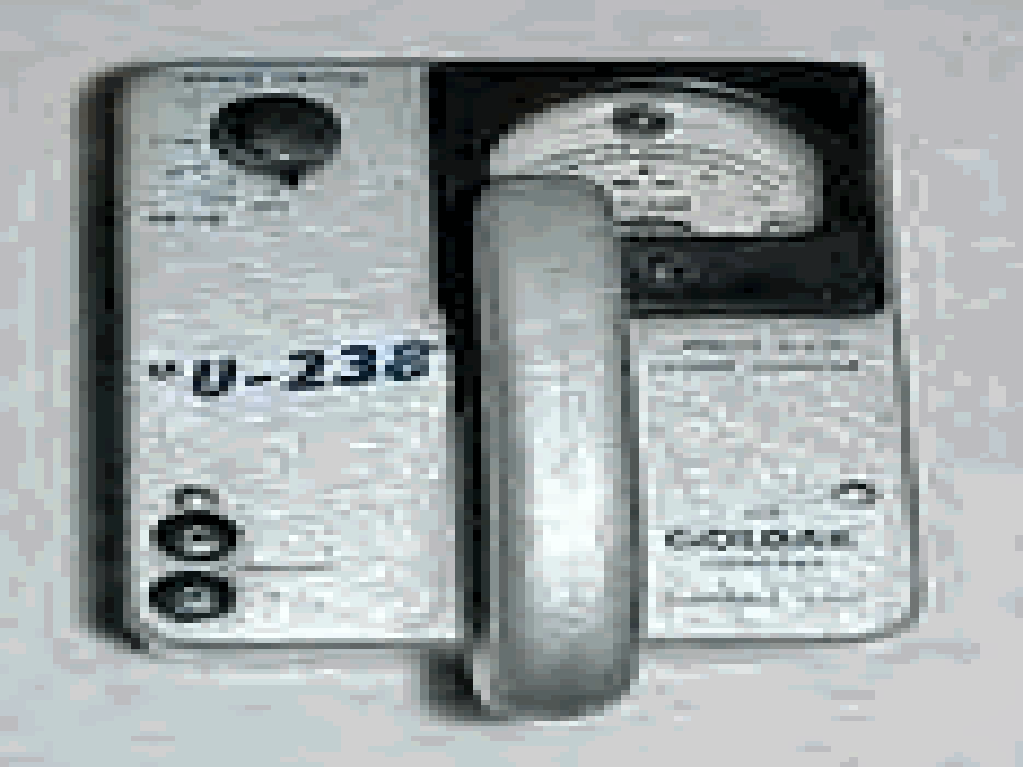
Goldak Model GC-238 1954
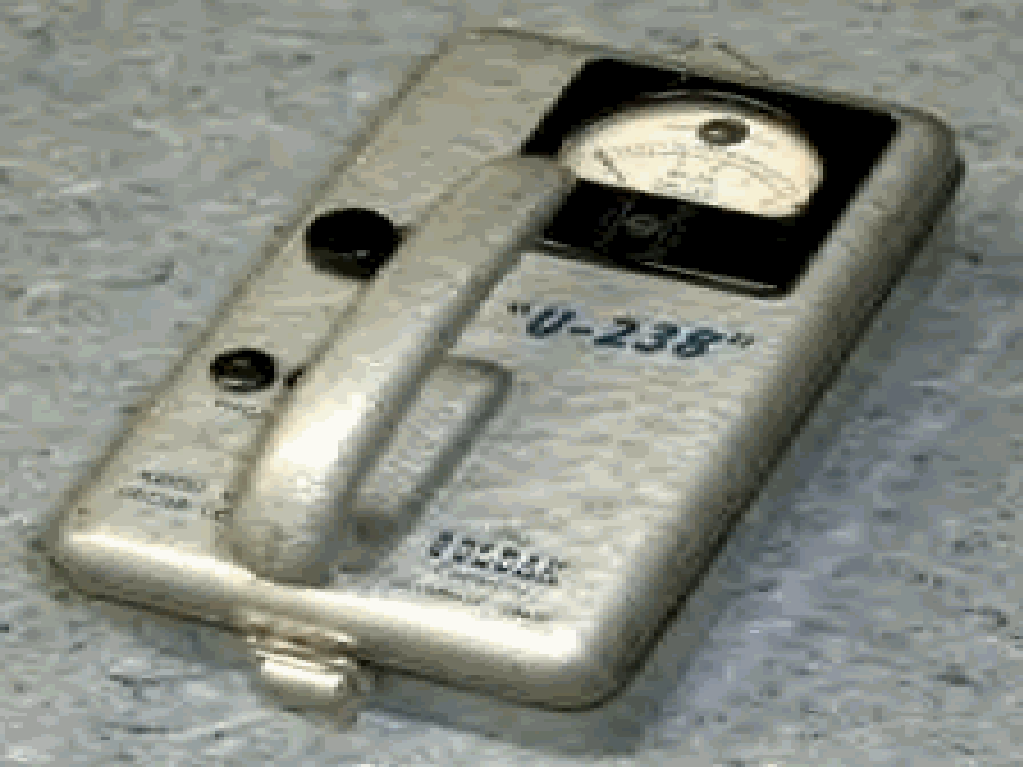
Goldak Model U-238
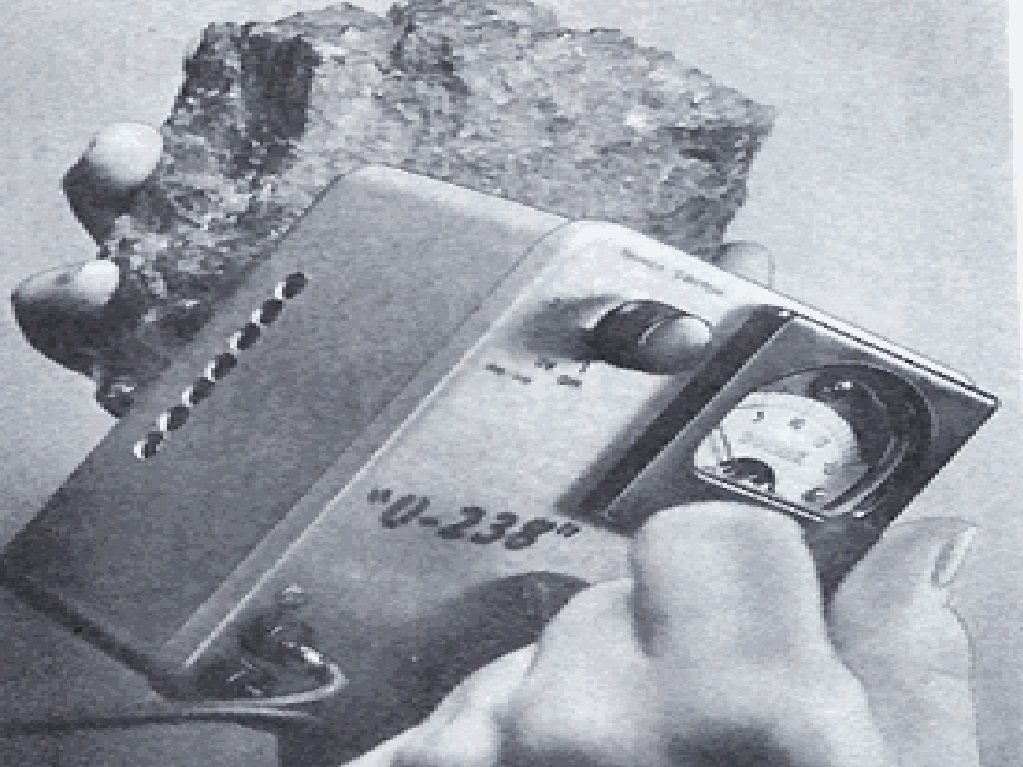
Goldak Model U-238C 1955
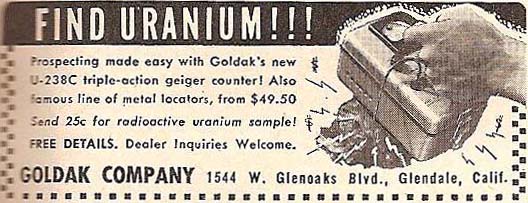
Goldak Model U-238C Ad 1955
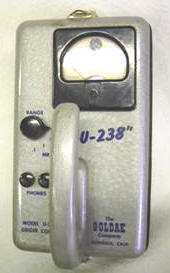
Goldak Model U-238C 1950's

Goldak Model U-238C Geiger Counter Ad 1955
The Goldak Model U-238C sold for $94.50 in 1955. The sensitivity meter has settings of 0.1, 1 and 10 mR/h. The unit was 5.25 x 4 x3 and weighed 3.75 lbs. It used two 45 volt and two flashlight batteries. The user could either monitor clicks in the headphones, flashes in the neon light, or read the meter. There were holes in the side and bottom to permit entry of radiation. The unit came with earphone and ore sample.
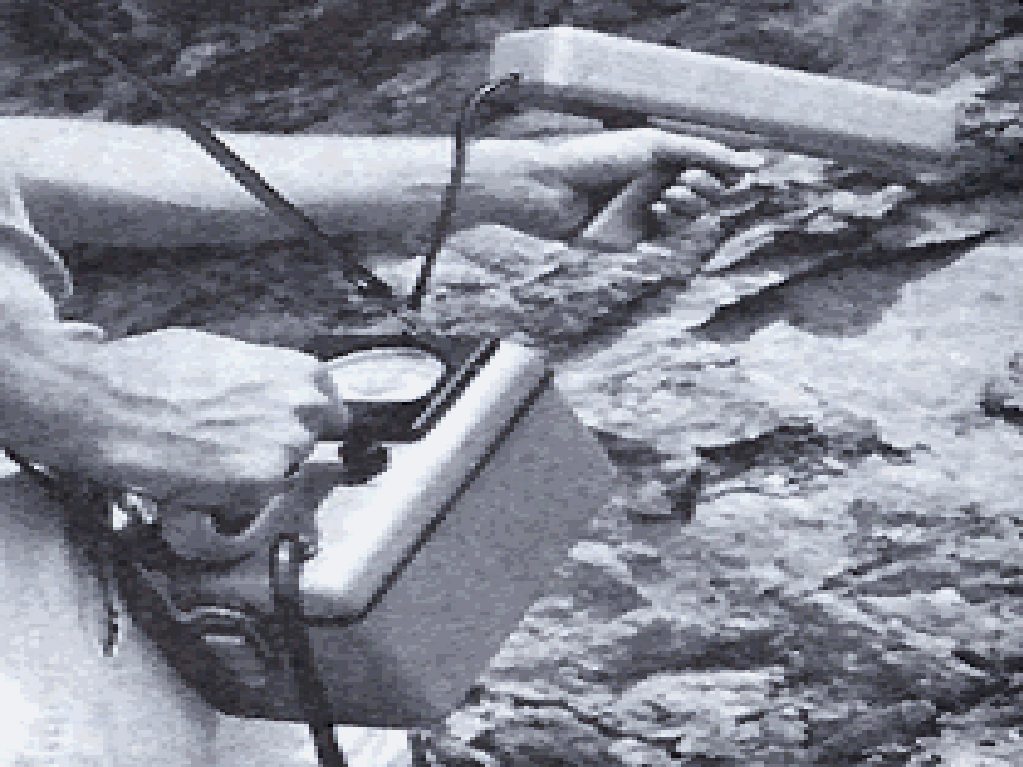
Goldak Model Scintiscope
The Colorado Model 200 was introduced in 1955 and sold for $149.50. It weighed 5.5 lbs. It had a neon flasher, headphones, and a three-scale meter. The unit had a sensitivity range from 0.2 to 20 mR/h.
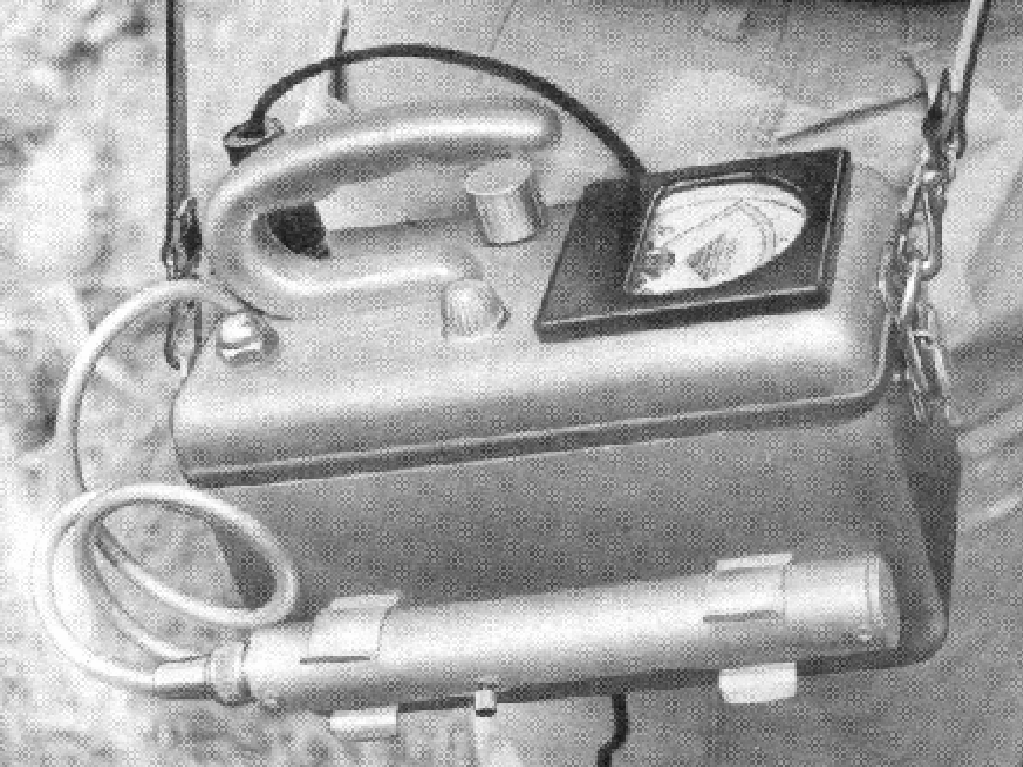
Goldak Model Colorado
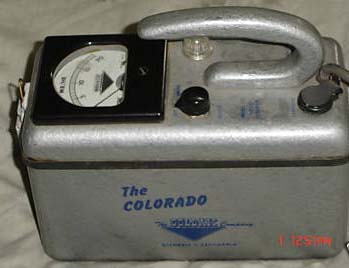
Goldak Model Colorado

Glodak Model Colorado
The Scinta-Ray Model 203 was a scintillation counter designed for field vehicle and airborne use. It sold for $389.50 in 1955. It was compact 4 x 7 x 5.5 and weighed 4.75 lbs., including batteries. It has fast and slo time constants. It was rugged and has a long battery life. There was also a pilot light in the meter. There were six sensitivity ranges from 0.025 to 5 mR/h. The detector was a 1 x 1 sodium iodide crystal. The scintillation crystal is a clear, flawless crystal of sodium iodide with particles of metallic thallium distributed in it. The crystal is ground, polished, and hermetically sealed in a plastic or aluminum can with an optical window at one end. The optical window is placed next to a photomultiplier with a clear viscous oil between the two. This functions as a light pipe so no portion of the light is lost. The entire unit is then wrapped in black electrical tape. Scintillation counters are efficient in detecting up to 50% of the gammas that interact with the crystal as opposed to 1% for geiger counters. In 1959, there were eight commercially available scintillation counters.
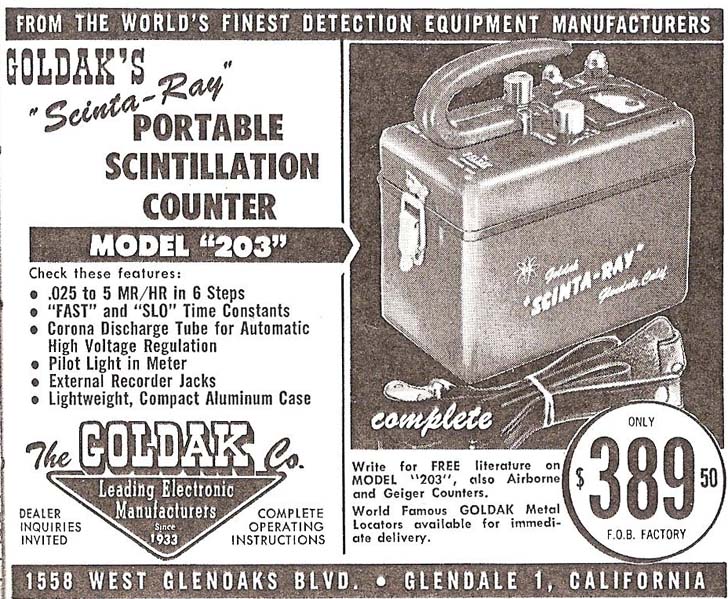
Goldak Model 203 Ad 1955
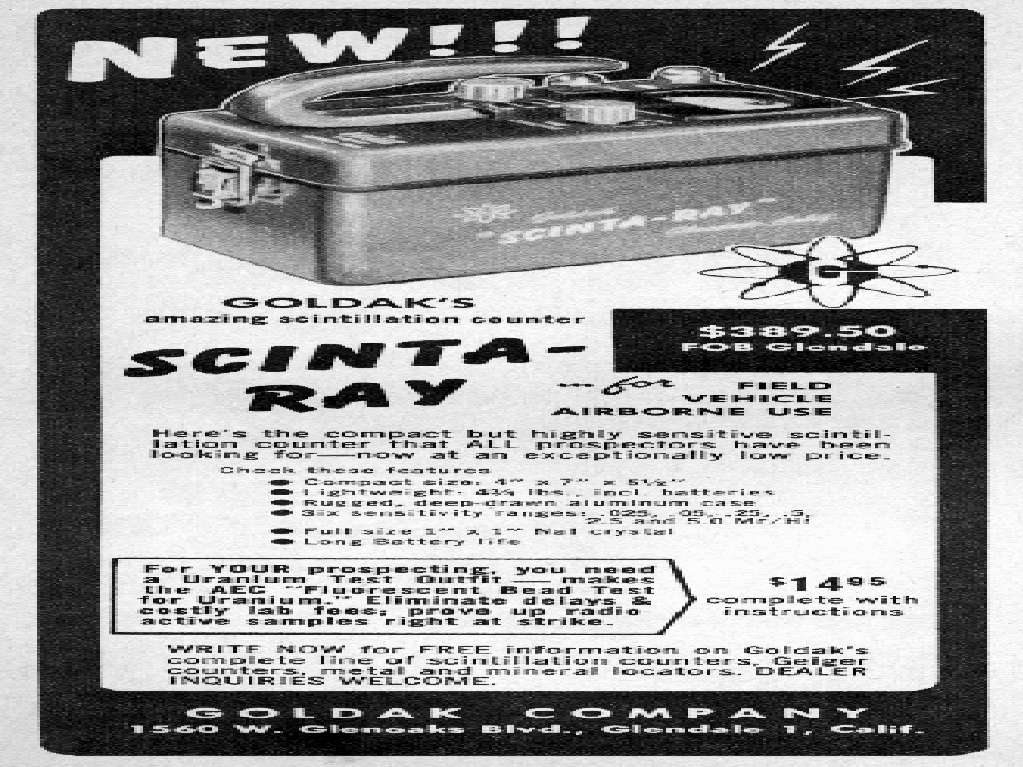
Goldak Scinta-Ray Model 203 Ad 1955
The Goldak Model CD-10 GM survey meter was offered in 1955. The unit was used in Operation Teapot at the Nevada Test Site as part of an evaluation of survey instruments.
Need photo
Goldak Model CD-10 1955
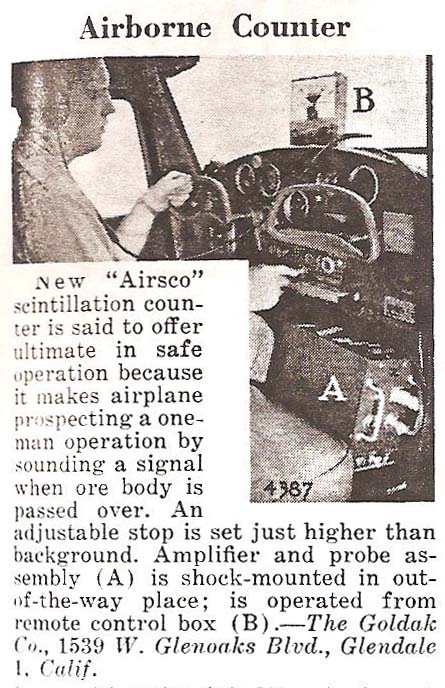
Glodak Airsco Airborne System Ad 1955